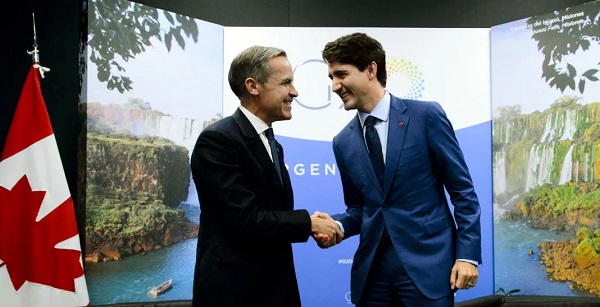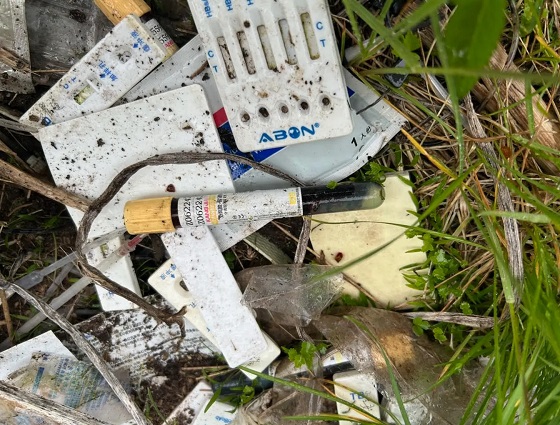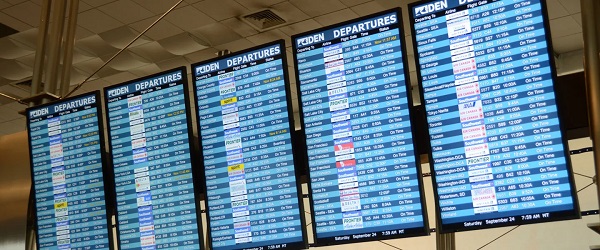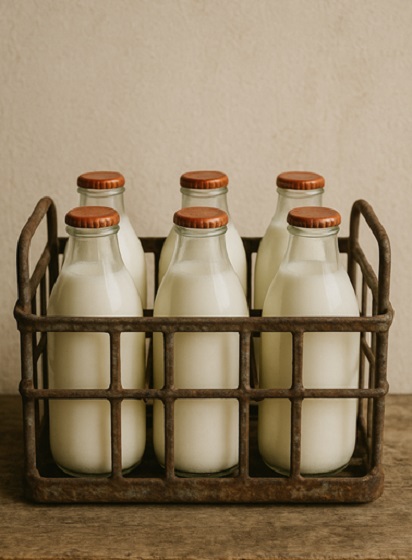Alberta
My European Favourites – One Day In The Bavarian Alps
My European Favourites – One Day In The Bavarian Alps
My favourite area of Germany is Bavaria. It’s the largest state, about one fifth the size of the country, and is located in the south-east of Germany. Bordering the Czech Republic and Austria, the state’s capital Munich is an easy place to fly into, and it is a great city to explore and enjoy, especially during Oktoberfest.

Hotel Wittlesbach and two buildings in Oberammergau with painted frescoes
Oberammergau, Germany
The Bavarian Alps are about an hour drive south from Munich, and one of my favourite places to stay is in the town of Oberammergau. You may have heard of the town as it is well known worldwide for its performance of the “Passion Play,” which is performed in the aptly named, Passion Play Theatre. In 1633, while the plague was rampant in Europe, the villagers promised to perform the play every ten years if no further deaths from the plague occurred in Oberammergau. The play details the suffering, death and resurrection of Christ. Their prayer was answered, and they kept their promise with the first play staged in 1634. The most recent performance was supposed to be in 2020, but due to the covid-19 pandemic, it has been moved to 2022.
Oberammergau is a compact place easily explored on foot. The Bavarian State Woodcarving School is located there, and there are shops where you can purchase everything from wooden toys to elaborate woodcarvings, including those of religious saints and crucifixes. As you walk through the town, you will see many buildings with painted frescoes (Lüftlmalerei) on their exterior walls with scenes from fairy tales, Bavarian folk themes, religious scenes and decorations that imitate architectural elements.
To be able to accomplish our sightseeing today we need to start with an early breakfast at one of the local hotels. One of my favourites is the Hotel Wittlesbach which is located right in the town centre and has been operated and owned by the Ternes family for many years. The hotel is full of the Bavarian charm you would expect, and the breakfast they offer is very good. We have stayed there many times over the years, and our groups love the hotel and location.

King Ludwig II of Bavaria’s Linderhof Palace and Neuschwanstein Castle
Mad King Ludwig II of Bavaria
Linderhof Palace is only a 15-minute drive away from Oberammergau and is the smallest of the three places or castles built by King Ludwig II of Bavaria. The Kingdom of Bavaria existed from 1805 until 1918, and the Ludwig’s Wittelsbach family ruled during the kingdom’s entire existence. In 1864, Ludwig became king at the age of 18. He had little interest in politics and soon began to spend his own wealth on personal projects, like three fairy tale palaces or castles. His spending and accumulating debt became such a concern by Bavaria’s political elite that they had a medical commission declare him insane and
incapable of reigning. A day later, he was on a walk with his psychiatrist, and they were both found dead; presumably drowned and floating in Lake Starnberg. Now that you know some of the story of King Ludwig II, we can talk about two of the three places or castles he built, Linderhof Palace and Neuschwanstein Castle. The third and largest building, the New Herrenchiemsee Palace, which will not be part of our day, was built on an island in Lake Chiemsee and was to be a copy of Versailles in France, but it was never completed.

Linderhof Palace, the Gilt Fountain and the Neptune Fountain
Linderhof Palace
Linderhof is the only palace that King Ludwig II lived to see completed, and it is located near where his father, King Maximilian II, had the royal hunting lodge. Ludwig went there many times as a child and was very familiar with the location in the Graswang Valley near Ettal.
Ludwig idolized the French Sun-King Louis XIV and wanted to emulate his grand palaces in Bavaria. Throughout the Linderhof Palace, you will find sun decorations as an homage to his idol and as a symbol of royal absolute power. Linderhof was initially intended to be Ludwig’s Versailles, but due mainly to an unsuitable sized area, it became a smaller project which was completed in 1886. During his construction of Linderhof, Ludwig purchased the much larger Herrenwörth island on Lake Chiemsee, and it became the new site to build his Versailles as Herrenchiemsee Palace.
The Linderhof Park is fun to explore and has a mixture of different garden designs, cascading waterfalls, fountains, and a large pond with a gilt fountain that jets water 25 meters in the air. As you walk through the park, you will find a swan pond, the Moroccan House, the Terrace gardens, a Temple of Venus, a Neptune fountain, a Royal Lodge, a chapel, a music pavilion, a Moorish kiosk, various parterres (level gardens with symmetrical patterns) and a grotto. The Venus grotto is an artificial grotto and theatre where Ludwig could sit in his small boat as it was gently rocked by a wave machine and watch his favourite operas by Wagner.
A ticket is required to tour the palace with a guide, but there are really only four rooms that served a specific purpose. The first room is the “Hall of Mirrors” which served as the main living room. Then there is Ludwig’s bed chamber, the dining room with a disappearing dumb-waiter, and the small audience chamber which was used by Ludwig as a study and not a room where he would see people. There are two “Tapestry Chambers” which serve no real purpose, and there are no real tapestries on the walls, but instead, there are canvas paintings made to imitate tapestries.
A visit to Linderhof is enjoyable mainly for the gardens and palace exterior, but you might as well see the palace interior if you are there. Near the parking area, there are shops where you can purchase your ticket to tour the palace, buy a souvenir or a snack. The Schloss Linderhof Hotel is there as well, but I would rather stay in Oberammergau.

Fussen Arena, Fussen’s colorful old town, plus the Abbey and Castle
Fussen
After spending the morning at Linderhof, we travel west for about an hour through winding mountain roads to the town of Fussen just north of the Austria border. Our hockey tours often go to Fussen to play at the BLZ Arena or Bundesleistungszentrum, which ever you prefer. The main arena is a fabulous structure with windows installed above the seating area offering natural light into the building and onto the ice surface. The hometown team, EV Fussen, nicknamed the Leopards, play in the U20 Deutsche Nachwuchsliga II. The BLZ complex also has a second arena, and surprisingly, a curling rink.
Fussen is at one end of the Romantic Road which is a 350 km tourist route with interesting towns, villages and sights. Wurzburg, in wine country, is at the other end and the medieval walled town of Rothenburg, just south of Wurzburg, is one the must stops on the road.
We will stop in Fussen for a couple of hours to explore the old town and have time for lunch. Fussen is an underappreciated town with medieval walls, baroque churches, a former Benedictine Abbey (St. Mang’s) and a museum with historical music instruments including violins and lutes. The interesting Fussen Castle has the unfortunate luck of being located on a few kilometers from one of the most famous castles in the world and gets no respect. With just a couple of hours in Fussen I’m walking directly to the old town’s pedestrian friendly cobblestone streets to find a nice place to have lunch. I don’t have a big sweet tooth, but I will try to make time to slip over to the Hotel Schlosskrone’s Konditorei Kurcafe for a nice dessert. The hard part at the pastry shop is deciding which one to have.

Hohenschwangau Castle and the scenic Bavarian Alps
Hohenschwangau Castle
Just a few kilometers from Fussen, you will find one of Germany’s top attractions- the Neuschawanstein Castle. When you arrive to the parking place, you will immediately see a mustard colored castle that is not as famous, named Hohenschwangau. King Maximillian II of Bavaria, Ludwig’s father, rebuilt this 19th century castle on the ruins of a previous castle which had been partially destroyed in various wars. The castle was restored to its original plans and became the summer residence of the royal family and a young Ludwig. The castle, which is now often overlooked by the larger Neuschwanstein Castle, can be toured along with the Museum of the Bavarian Kings. Unfortunately, our schedule does not allow time for it.

Mary’s Bridge, Neuschwanstein Castle entrance, lower courtyard and tower
Neuschwanstein Castle
Our goal today is to see the Neuschwanstein Castle before it closes. It’s a good idea to reserve your time online prior to arriving, especially in the busy season from May to September. After getting your ticket and tour time at the ticket office, you must get up to the castle courtyard on your own in time to join your tour. There are three ways to get up to the castle from the town; a walking path up to the castle that can take 20-30 minutes, horse carriages that take you most of the way up to the castle, and a shuttle bus that takes you up to the Mary’s Bridge (Marien Brucke). We will take the shuttle bus which costs a couple of Euros to the Mary’s Bridge drop off. The Mary’s Bridge offers a fantastic panoramic view of the castle and the valley below. Tourists flock here prior to or after touring the castle to take their most prized photo of the day.
After taking our photo, we still have to walk from the Mary’s Bridge on a paved path to the castle courtyard to join our English tour which takes about 35 minutes and ends, as most tours do, in a souvenir shop.
Despite its medieval look, Neuschwanstein was built in the 19th century and served no defensive purpose. It was built for one man, King Ludwig II of Bavaria, but unfortunately, he only spent eleven nights there. The original castle name was New Hohenschwangau Castle but was changed to Neuschwanstein Castle after Ludwig’s death. Neuschwanstein literally means “New Swan Castle” and was named after a character in one of Wagner’s operas, the Swan Knight.
In addition to being a big admirer of the French King Louis XIV, Ludwig was a big fan of the renowned composer Richard Wagner and was his patron. Many rooms in the castle were inspired by other characters in his operas, but sadly, Wagner never got a chance to see the castle as he died before its completion. The singer’s hall which occupies the entire third floor is adorned with characters from Wagner’s operas. The amazing woodwork in Ludwig’s bedroom took fourteen carpenters four years to complete. You will find that there is no throne room in the castle for Ludwig as the Throne Hall had not been completed by the time of his death. Although the fairy tale castle is one of the most photographed buildings in the world, tourists are not allowed to take photos inside the castle.
After our tour, we can slowly make our way down to the parking area and make our 45-minute drive back to Oberammergau where we can have dinner and enjoy the evening at an outdoor patio. Maybe tonight we will go to the Ammergauer Maxbräu in the Hotel Maximillian where they brew their own beer. That concludes a great day in the Bavarian Alps.
Explore Europe With Us
Azorcan Global Sport, School and Sightseeing Tours have taken thousands to Europe on their custom group tours since 1994. Visit azorcan.net to see all our custom tour possibilities for your group of 26 or more. Individuals can join our “open” signature sport, sightseeing and sport fan tours including our popular Canada hockey fan tours to the World Juniors. At azorcan.net/media you can read our newsletters and listen to our podcasts.
Images compliments of Paul Almeida and Azorcan Tours.
Alberta
Poilievre poised for comeback in Alberta stronghold

This article supplied by Troy Media.
Byelection win in Battle River-Crowfoot looks inevitable for Poilievre
Conservative Party leader Pierre Poilievre unexpectedly lost his Ontario-based seat in the House of Commons in the federal election. He’s running in a byelection in a safe Conservative riding in a different province. While some of his opponents and critics are hoping that lightning will strike twice, they can safely put this pipe dream to rest.
Poilievre was first elected in 2004. He ran as a Conservative MP in the Nepean–Carleton riding against David Pratt, a two-term Liberal MP and then Minister of National Defence. It was predicted to be a close race, and that’s exactly what happened. The 25-year-old, who had previously been
involved in Reform Party and Canadian Alliance circles, worked hard in this riding. He established a strong ground game with new and existing grassroots support. He won the riding with 30,420 votes (45.7 per cent), while Pratt finished second with 26,684 votes (40.1 per cent).
The newly minted Conservative MP’s support in Nepean-Carleton expanded in the preceding elections. He won 54.7 per cent in 2006, followed by 55.84 per cent in 2008 and 54.45 per cent in 2011. When his old riding was recreated during the federal election redistribution in 2012, Poilievre shifted to the new riding of Carleton. It wasn’t quite as Conservative-leaning, which meant it would take more work to hang on to this seat.
The 2015 election was a tough battle for Poilievre, but he won 46.86 per cent versus Liberal candidate Chris Rodgers’s 43.74 per cent. He had an easier time against Rodgers in their 2019 rematch, winning 46.35 to 38.23 per cent. Poilievre nearly crossed the 50 per cent threshold in 2021, earning 49.9 per cent of the vote. He now seemed solidly entrenched in Carleton.
That’s what made Poilievre’s April 28 loss to lightly regarded Liberal candidate Bruce Fanjoy so surprising.
There were a few factors that likely contributed to this upset. The Ottawa region, where the Carleton riding is located, turned heavily against most Conservative candidates in this year’s election. Poilievre had to run a national campaign and couldn’t spend nearly as much time in his local riding as he had done in the past. The Longest Ballot Committee, which was established in 2021 to protest Canada’s first-past-the-post electoral system, flooded the ballot with independent candidates and muddied the political waters. And, as Fanjoy suggested in an April 29 interview with CBC Radio’s Ottawa Morning, the issue of U.S. President Donald Trump and his tariffs could have partially turned the tide.
So be it.
Poilievre wanted to continue in politics and remain Conservative leader. His next move was to find a new seat to run in a byelection. He needed to resolve this matter quickly so that he could return to the House of Commons.
When three-term Conservative MP Damien Kurek graciously decided to step aside from his seat in Battle River-Crowfoot on May 2, a unique opportunity had opened up. Would Prime Minister Mark Carney call a byelection? He told the media that “I will ensure that it happens as soon as possible… no games, nothing, straight.” To his credit, the PM kept his word. When Kurek officially resigned on June 17, Carney issued the byelection writ on June 30.
Battle River–Crowfoot is one of the safest Conservative ridings in Canada. There hasn’t been a close result since the rural Alberta riding was created in the aforementioned 2012 federal election redistribution. Kevin Sorenson won 80.91 per cent of the vote in 2015, while Kurek won 85.5 per cent, 71.3 per cent and 82.84 per cent in 2019, 2021 and 2025, respectively.
If you include results in other iterations of the riding—Acadia, Battle River, Battle River-Camrose, Camrose and Crowfoot—it’s been in the hands of a right-leaning politician for all but two years. The only time it changed was when former Progressive Conservative MP Jack Horner crossed the floor to the Liberals in 1977. He was then crushed in the 1979 election, earning only 18.2 per cent of the vote against Progressive Conservative candidate Arnold Malone’s 77.12 per cent. (Malone decisively beat Horner again in 1980, winning 76.61 to 15.53 per cent.)
Some political pundits and prognosticators may be hoping the Aug. 18 byelection will be closer than expected. Liberal candidate Darcy Spady, along with Independents Bonnie Critchley and Sarah Spanier and some smaller party candidates, are all attempting to beat Poilievre in a riding that he’s never represented. The independence movement that has encompassed Western Canada as of late goes right through this riding. The Longest Ballot Committee has targeted Battle River–Crowfoot in hopes of creating another Carleton-like upset, too. Don’t count on any of this happening, however.
338Canada, a respected Canadian-based political forecasting and commentary website, showed a massive Conservative lead of 80 per cent (with a possible uptick of up to six per cent) on July 13. The odds of a Conservative win in Battle River–Crowfoot are currently at 99 per cent.
Poilievre is firmly in the driver’s seat. While it obviously doesn’t matter what his margin of victory is in Battle River–Crowfoot, he would surely like to keep it close to Kurek’s most recent victory. This means he can’t rest on his laurels—which isn’t his style to begin with—and has to take it to the finish line.
That’s exactly what he’s going to do.
Michael Taube is a political commentator, Troy Media syndicated columnist and former speechwriter for Prime Minister Stephen Harper. He holds a master’s degree in comparative politics from the London School of Economics, lending academic rigour to his political insights.
Troy Media empowers Canadian community news outlets by providing independent, insightful analysis and commentary. Our mission is to support local media in helping Canadians stay informed and engaged by delivering reliable content that strengthens community connections and deepens understanding across the country.
Alberta
Upgrades at Port of Churchill spark ambitions for nation-building Arctic exports

In August 2024, a shipment of zinc concentrate departed from the Port of Churchill — marking the port’s first export of critical minerals in over two decades. Photo courtesy Arctic Gateway Group
From the Canadian Energy Centre
By Will Gibson
‘Churchill presents huge opportunities when it comes to mining, agriculture and energy’
When flooding in northern Manitoba washed out the rail line connecting the Town of Churchill to the rest of the country in May 2017, it cast serious questions about the future of the community of 900 people on the shores of Hudson Bay.
Eight years later, the provincial and federal governments have invested in Churchill as a crucial nation-building corridor opportunity to get resources from the Prairies to markets in Europe, Africa and South America.
Direct links to ocean and rail

Aerial view of the Hudson Bay Railway that connects to the Port of Churchill. Photo courtesy Arctic Gateway Group
The Port of Churchill is unique in North America.
Built in the 1920s for summer shipments of grain, it’s the continent’s only deepwater seaport with direct access to the Arctic Ocean and a direct link to the continental rail network, through the Hudson Bay Railway.
The port has four berths and is capable of handling large vessels. Having spent the past seven years upgrading both the rail line and the port, its owners are ready to expand shipping.
“After investing a lot to improve infrastructure that was neglected for decades, we see the possibilities and opportunities for commodities to come through Churchill whether that is critical minerals, grain, potash or energy,” said Chris Avery, CEO of the Arctic Gateway Group (AGG), a partnership of 29 First Nations and 12 remote northern Manitoba communities that owns the port and rail line.
“We are pleased to be in the conversation for these nation-building projects.”
In May, Canada’s Western premiers called for the Prime Minister’s full support for the development of an economic corridor connecting ports on the northwest coast and Hudson’s Bay, ultimately reaching Grays Bay, Nunavut.
Investments in Port of Churchill upgrades
AGG, which purchased the rail line and port from an American company in 2017, is not alone in the bullish view of Churchill’s future.
In February, Manitoba Premier Wab Kinew announced an investment of $36.4 million over two years in infrastructure projects at the port aimed at growing international trade.
“Churchill presents huge opportunities when it comes to mining, agriculture and energy,” Kinew said in a release.
“These new investments will build up Manitoba’s economic strength and open our province to new trading opportunities.”
In March, the federal government committed $175 million over five years to the project including $125 million to support the rail line and $50 million to develop the port.
“It’s important to point out that investing in Churchill was something that both the Liberal and Conservative parties agreed on during the federal election campaign,” said Avery, a British Columbian who worked in the airline industry for more than two decades before joining AGG.
Reduced travel time
The federal financial support helped AGG upgrade the rail line, repairing the 20 different locations where it was washed out by flooding in 2017.
Improvements included laying more than 1,600 rail cars worth of ballast rock for stabilization and drainage, installing almost 120,000 new railway ties and undertaking major bridge crossing rehabilitations and switch upgrades.
The result has seen travel time by rail reduced by three hours — or about 10 per cent — between The Pas and Churchill.
AGG also built a dedicated storage facility for critical minerals and other commodities at the port, the first new building in several decades.
Those improvements led to a milestone in August 2024, when a shipment of zinc concentrate was shipped from the port to Belgium. It was the first critical minerals shipment from Churchill in more than two decades.
The zinc concentrate was mined at Snow Lake, Manitoba, loaded on rail cars at The Pas and moved to Churchill. It’s a scenario Avery hopes to see repeated with other commodities from the Prairies.
Addressing Arctic challenges
The emergence of new technologies has helped AGG work around the challenges of melting permafrost under the rail line and ice in Hudson Bay, he said.
Real-time ground-penetrating radar and LiDAR data from sensors attached to locomotives can identify potential problems, while regular drone flights scan the track, artificial intelligence mines the data for issues, and GPS provides exact locations for maintenance.
The group has worked with permafrost researchers from the University of Calgary, Université Laval and Royal Military College to better manage the challenge. “Some of these technologies, such as artificial intelligence and LiDAR, weren’t readily available five years ago, let alone two decades,” Avery said.
On the open water, AGG is working with researchers from the University of Manitoba to study sea ice and the change in sea lanes.
“Icebreakers would be a game-changer for our shipping operations and would allow year-round shipping in the short-term,” he said.
“Without icebreakers, the shipping season is currently about four and a half months of the year, from April to early November, but that is going to continue to increase in the coming decades.”
Interest from potential shippers, including energy producers, has grown since last year’s election in the United States, Avery said.
“We’re going to continue to work closely with all levels of government to get Canada’s products to markets around the world. That’s building our nation. That’s why we are excited for the future.”
-

 Energy2 days ago
Energy2 days agoIs The Carney Government Making Canadian Energy More “Investible”?
-

 Immigration2 days ago
Immigration2 days agoUnregulated medical procedures? Price Edward Islanders Want Answers After Finding Biomedical Waste From PRC-Linked Monasteries
-

 Business2 days ago
Business2 days agoDemocracy Watchdog Says PM Carney’s “Ethics Screen” Actually “Hides His Participation” In Conflicted Investments
-

 Business2 days ago
Business2 days agoCompetition Bureau is right—Canada should open up competition in the air
-

 Business2 days ago
Business2 days agoIt’s Time To End Canada’s Protectionist Supply Management Regime
-

 COVID-192 days ago
COVID-192 days agoFreedom Convoy leaders’ sentencing hearing to begin July 23 with verdict due in August
-

 Addictions2 days ago
Addictions2 days agoAfter eight years, Canada still lacks long-term data on safer supply
-

 National2 days ago
National2 days agoLiberals push to lower voting age to 16 in federal elections












